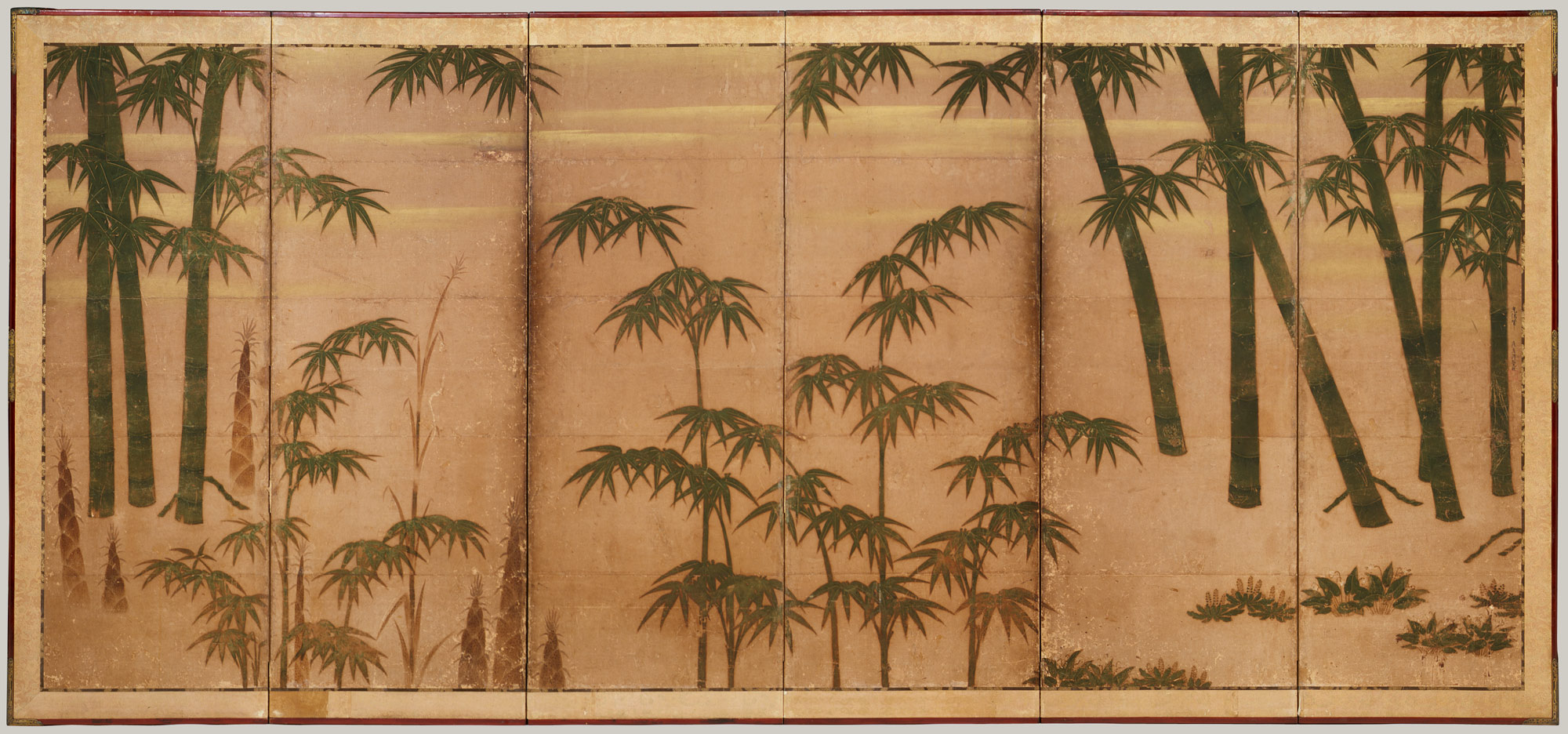Landscapes
When viewing landscapes, either in real life or through paintings just seeing an open view of the world is always calming, relaxing, and enjoyable. Most of the time the view is of something simple and great.
Such is the nature of these two landscapes, where one was made on a handscroll and the other on a folding screen.
 |
| (Huang Gongwang, Dwelling in the Fuchun Mountains, 1350, National Palace Museum, Taipe) |
 |
| (Bamboo in the Four Seasons: painting and poetry in Japan, late 15th - early 16th century, The Metropolitan Museum of Art) pt1. |
| (Bamboo in the Four Seasons: painting and poetry in Japan, late 15th - early 16th century, The Metropolitan Museum of Art) pt2. |
This is the image of the last part of the folding screen doors, is shows winter being the last image of the painting. The most eye-catching thing here is the motion of the bamboo tree being held down the weight of the snow. This shows the amount of detail put into this painting to really bring it to life. Although, if all the colors were present a gold streak would be seen running across the background of the entire piece. But because of how old this painting is the gold has been washed out over time.
Looking at these two great paintings side by side we can tell they both have great stories, that talk about the tale of time. Through surviving it and expressing it through the four seasons. These two paintings also have similarities in how they were treaded, the Dwelling of the Fuchun Mountains was cared for, in an unconditional way. While Bamboo in the Four Seasons was taken care of through the colors that were used to bring the seasons to life; as gold was used to represent the sun's rays. Although there are a few differences between the two, besides their lengths and heights. Such as the materials used; for Dwelling in the Fuchun Mountains, it was created on a paper handscroll.
That's important because of how you read that story, revealing one piece at a time. Unlike Bamboo in The Four Seasons where you get the whole idea in one go of looking at it. One big difference is, we know the artist of one piece and not the other. The piece, Dwelling in the Fuchun Mountains has an artist to go with it, while Bamboo in The Four Seasons doesn't. In the end, the story of these two paintings is amazing, telling us there are somethings we cant keep forever.
"Bamboo In The Four Seasons: Painting And Poetry In Japan – Smarthistory". 2021. Smarthistory.Org. https://smarthistory.org/tosa-mistunobu/.
"Huang Gongwang, Dwelling In The Fuchun Mountains – Smarthistory". 2021. Smarthistory.Org. https://smarthistory.org/huang-gongwang-dwelling-in-the-fuchun-mountains/.
“The Iconic Trees of Japan - Culture.” JapanTravel. Accessed February 15, 2021. https://en.japantravel.com/photostory/the-iconic-trees-of-japan/60486.


I thought you did a great job with explaining the details within both compositions. I also think it is interesting how "Bamboo in Four Seasons" uses both Chinese and Japanese elements to show this change. It seems that the "Bamboo in Four Seasons:" is more symbolic than the "Dwelling in the Fuchun Mountains" piece. What are some other differences that you noticed besides lengths and heights of both pieces? Good job!
ReplyDelete-Maribel Y.
I really enjoyed reading the description under each artwork you have, however, I believe there is more differences between the artworks than just the length and height. You mentioned the colors briefly, maybe build on that a little more? Overall you did a great job, though!
ReplyDelete